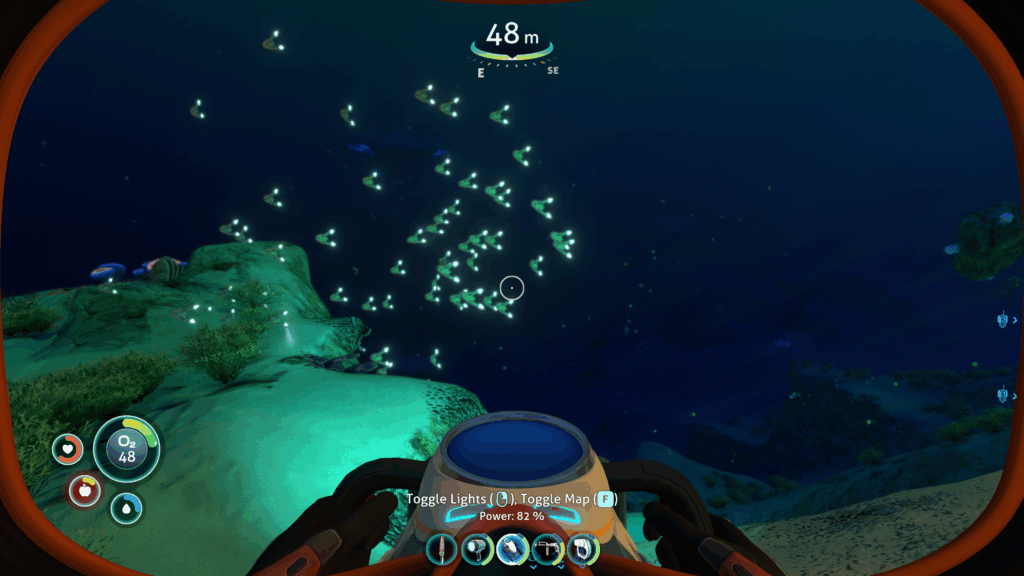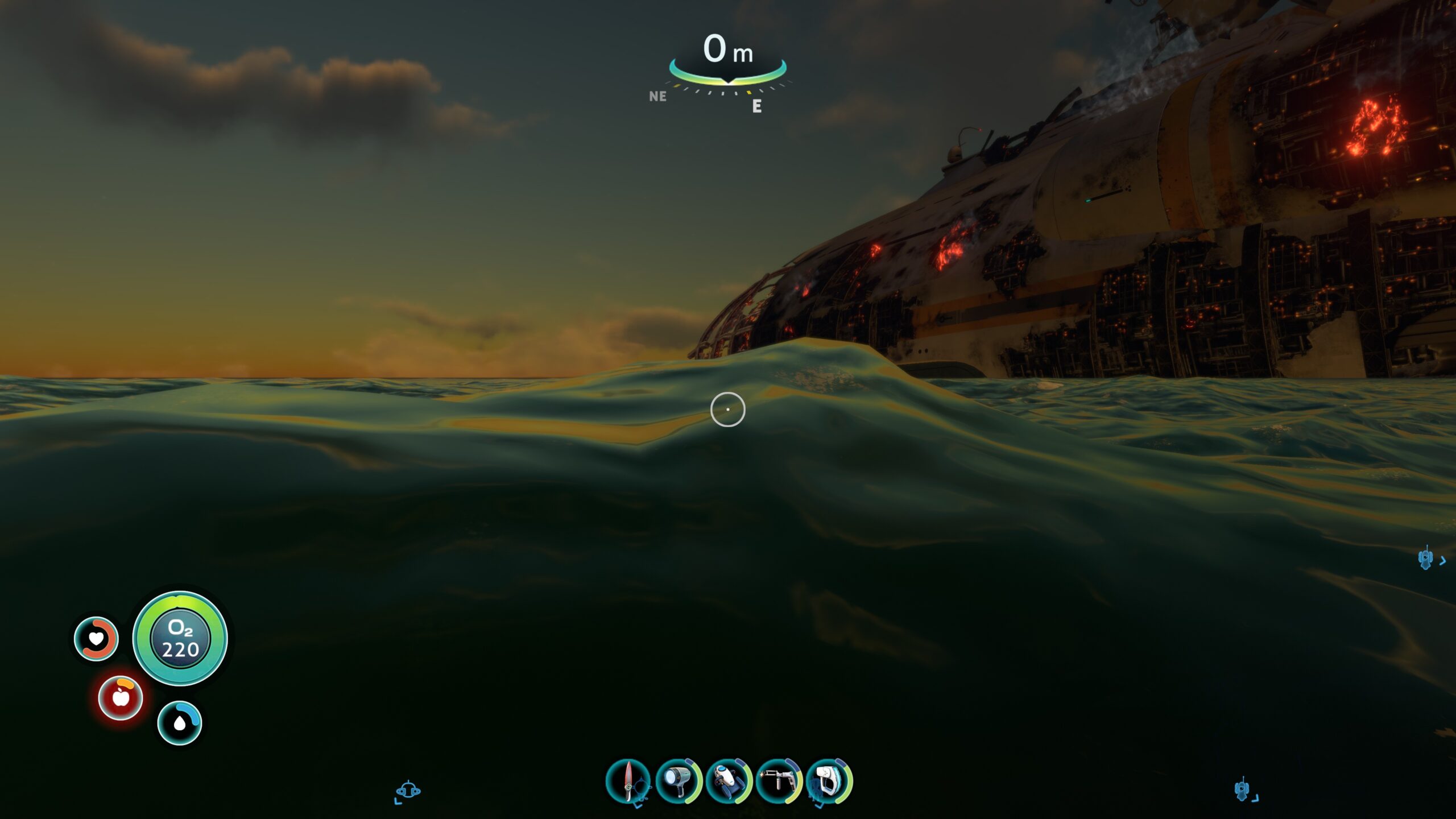Subnautica 2 has been announced, with its playable early access coming out soon, and so I wanted to play through the original again. It is nearing its eighth birthday but isn’t showing any signs of it. Having just spent another 24 hours to complete the game, I’d say it remains one of the best video games ever made.
2018 was a bit of a boom year for survival crafting, a genre of games that were being churned out because of the unending success of Minecraft. Games like Rust, Don’t Starve, The Forest, No Man’s Sky, DayZ, and Ark: Survival Evolved were all hugely popular, and (at the highest level) all fit into the same loop: hunt and gather around an open world in order to build yourself a better base, unlocking a tech tree of more complex gameplay mechanics.
These games all feature more mature themes than their Minecraft and Terraria predecessors though. They’re often gritty and more deadly. Subnautica shares that darker tone. Whilst many games in the genre will dial up mortality to make a game thrilling, Subnautica seems to have dived deeply into researching the psychology of fear and added that forbidden fruit into the game. In fact, in one part of the game, your sole companion (an AI that helps you understand your surroundings) will happily tell you, “matches 7 of the 9 preconditions for stimulating terror in humans”.

There are jump scares, but they never feel cheap, and are often caused by you not realising how close you were to danger. Mostly, the atmosphere is built up with brilliant level design that still grips me even after playing for multiple days now. Gaps of dead space in the map, where your light has stopped touching anything, always leave me wondering if I’m on the right track, or wondering into the deadly end of the world. Should I push on? How close was that under-sea roar just then?
The Metroidvania style content locks are there but much more organic. There are a few literal moments of “you need the blue key”, but the much better designed parts of the game involve the tense feeling of “am I pushing my luck too far?” Each moment you’re underwater, your oxygen level is ticking down. You may see a glint of something interesting on the ocean bed, but can you reach it? Later, you’ll get upgrades to that oxygen tank, but maybe you can reach it without… There’s a bunch of excitement that comes along with this and the game is well aware: building terrain designed to turn you around and become cramped.
Closer to the safety of the surface, the story is different. It is not all stress-based fun and often the stakes can be completely removed. Whilst base building, it can often be a peaceful experience. The ocean, when not trying to terrify you, is a beautiful place. It is filled with life, both as huntable food and meddlesome pests. Trying to find resources can sometimes be tedious, but that’s part of any crafting game’s milieu. My advice here is whenever you have spare inventory space, you may as well pick up that mushroom or seed. You can always chuck ’em later if you need the space for something else.
Progression feels fantastic in this game, with each bit of gear making something easier. Unlocking the recipe for a new item often comes with the excited realisation that you can reach an inaccessible part of the world now.
I’ve not yet mentioned the story, but that’s not for lack of quality. I enjoy this story a great deal, and finished it eager to learn more about what happened on the planet. After eight years, it seems silly to want to avoid spoiling it, but I’m not going to. The basic premise is a well trodden path for survival games though: you’ve crash landed with very little, and you’re to start from scratch to get back off the planet. The problems along the way are interesting though and don’t feel like they’re there to just add content.
The final act of the game is a little annoying though: a fetch quest from many biomes. It seems the developers knew this was a frustrating ordeal though, and give you another game mechanic to overcome that. It’s an odd choice though. “We know this is frustrating, here’s something to help.” This felt like a conflict between the story writing team and the game developers.
I am always keen to play a game the way the developers intended it to be played, and so this most recent playthrough was on Survival Mode. Another mode is Freedom Mode, which is the same as Survival except that the eating and drinking mechanics are removed from the game. In future runs, this is the mode I’ll be playing. Finding water and food isn’t difficult in this game, and at later stages becomes so simple as to just be a chore. The sustenance system adds nothing to the game, to be very honest about it. It does not increase difficulty, it does not alter the story, and offers no bonuses. To boot: you can still get Steam achievements. I’d suggest playing Freedom Mode.
Other than that, this is not a difficult game. The large creatures are heart stopping when they come near you, but can be easily avoided if you’re not trying to attract attention. The most difficult part of the game may be mapping: refinding an area you know exists but can’t remember how to get to. Make use of the in-game tools that help with that, and there’s not much “skill” required except persistence. I only say that to dissuade people who think this looks like an intimidating game: it is still very rewarding to work through.
I’ve now played the game for over thirty hours – completing it twice. As an older game, you can often find it on sale (as it is right now on Steam) for less than £10. That’s a fantastic deal. Even at full price – around £25 – this game is a bargain.
I really believe this might be one of the best video games ever made.
